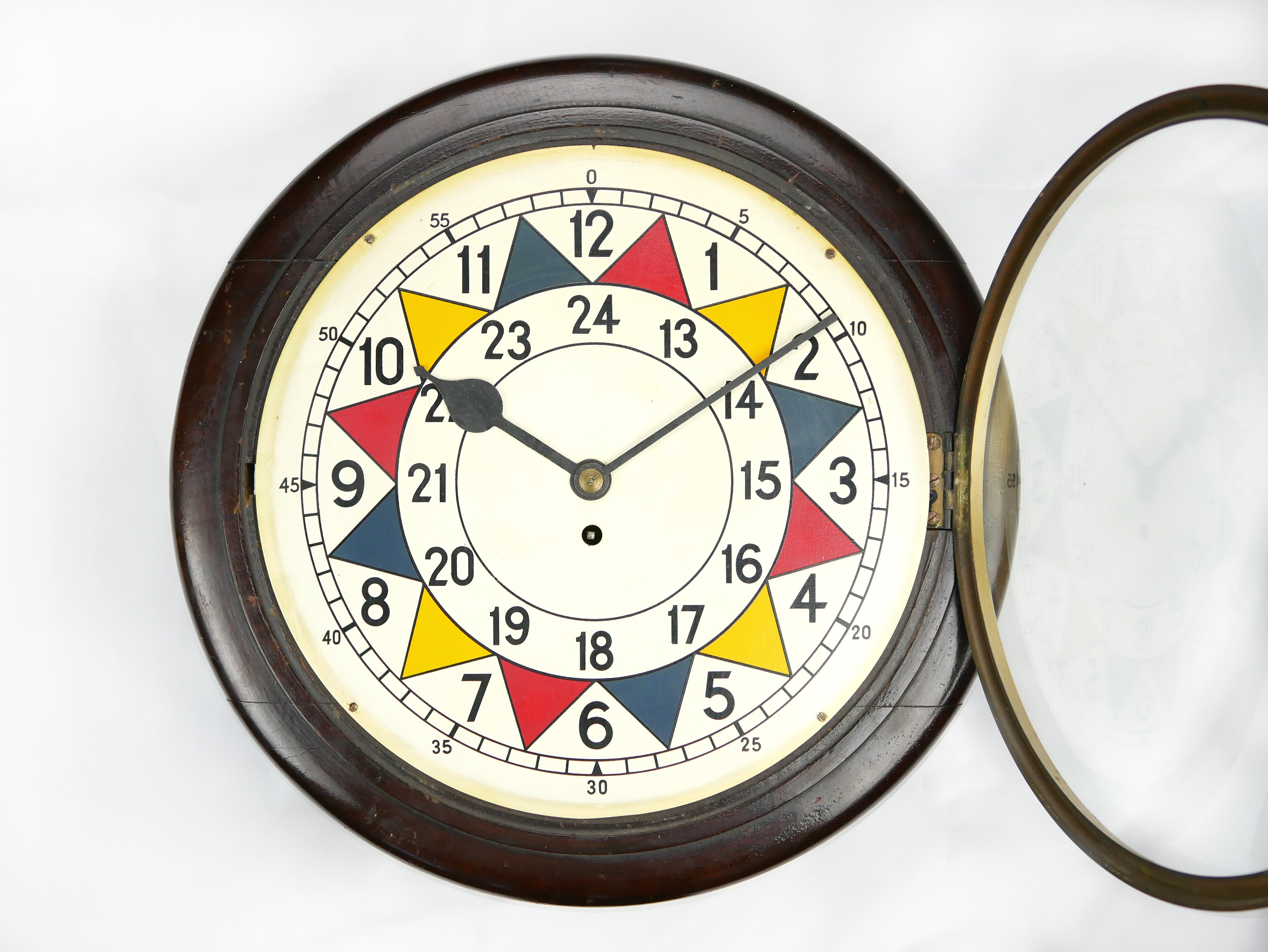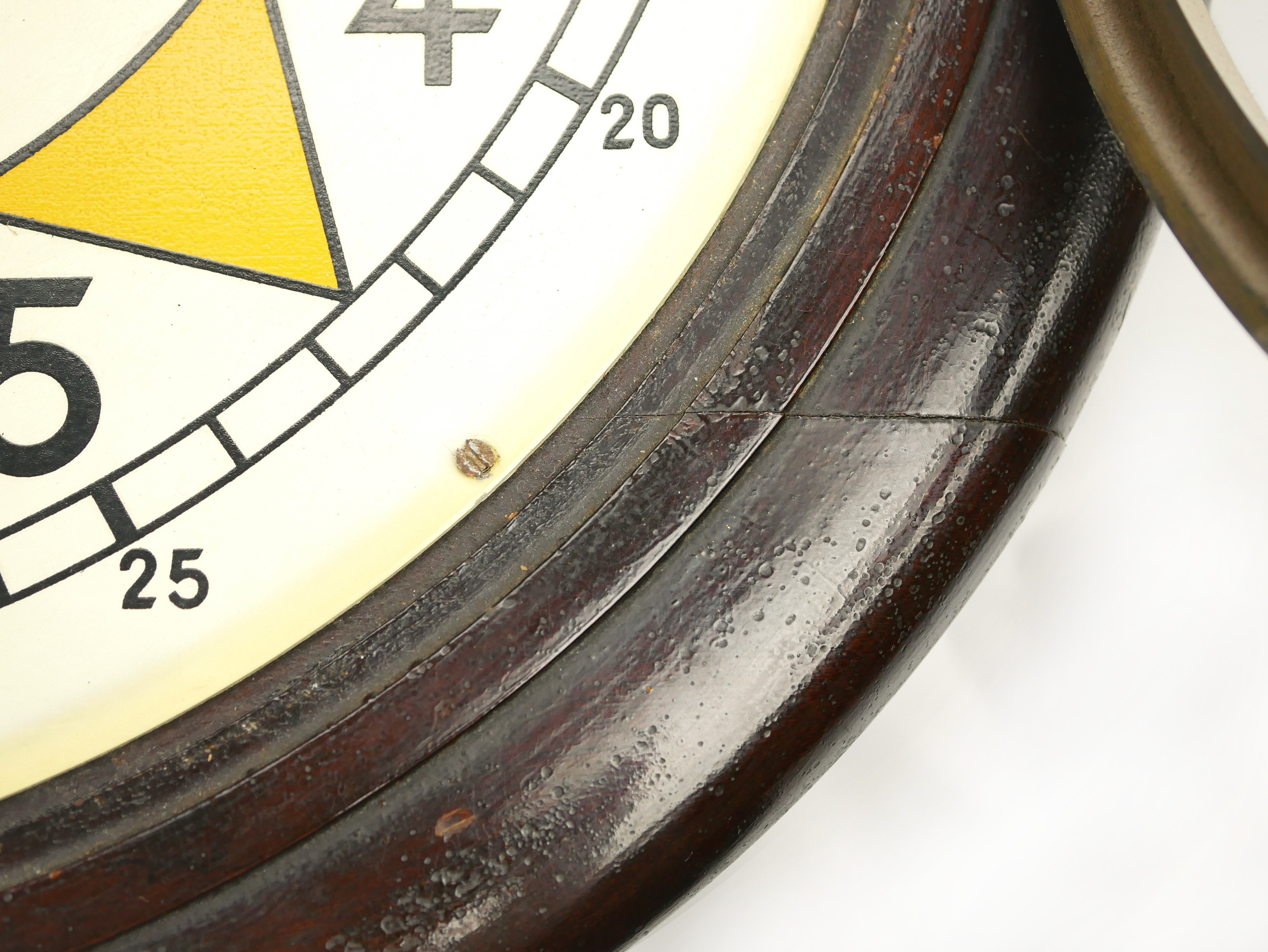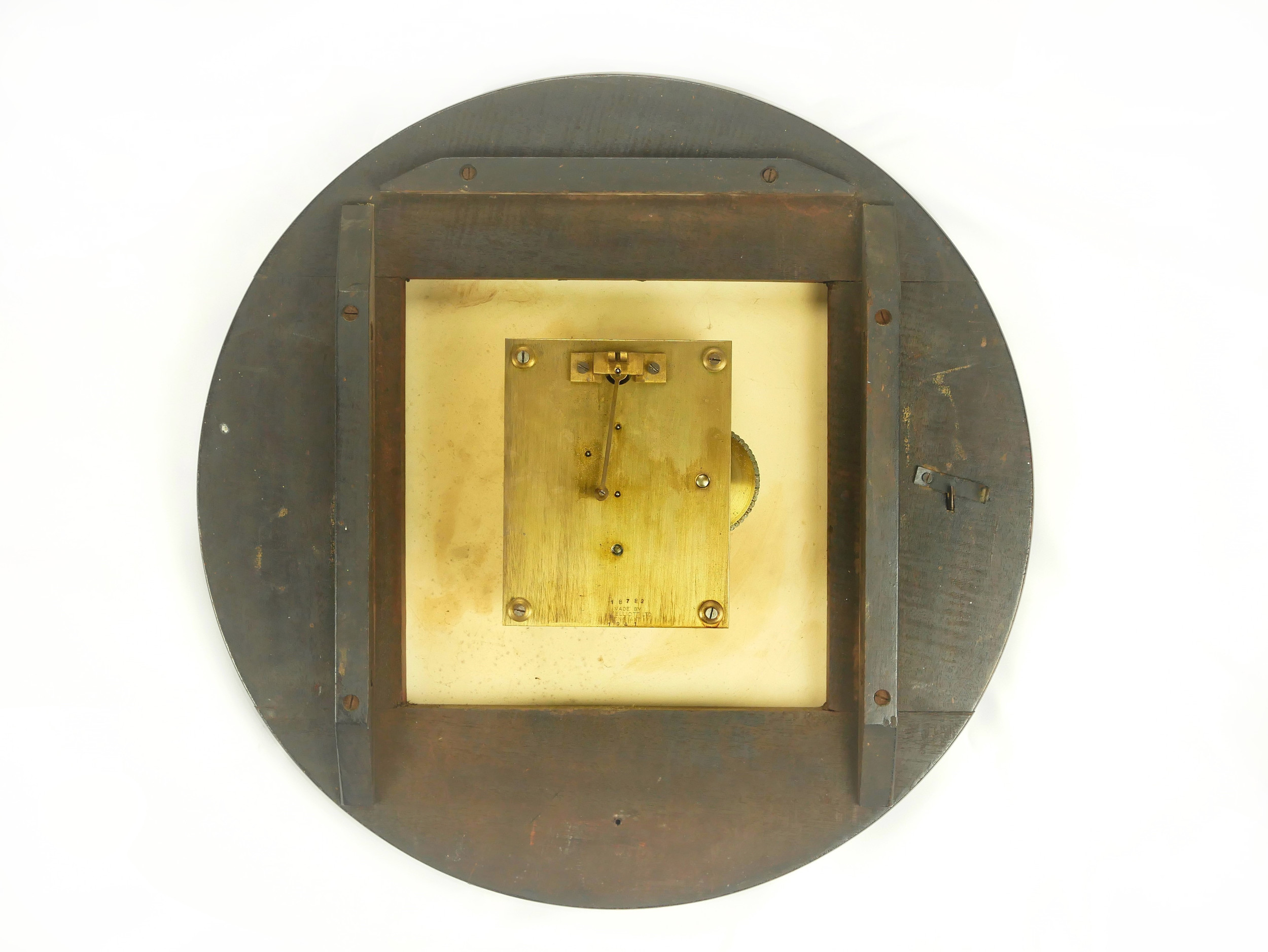Very Rare Royal Observer Corps (ROC) Fusee Elliott Type I Sector Clock c.1941.
Historical Background
Due to the bombing raids inflicted on London during WW1, the need arose for Britain to establish an air defence system that would enable it to track and intercept enemy aircraft.
The first early warning system was introduced in 1918 by Major General Ashmore who established the Metropolitan Observation Service (MOS), which later went on to become the Royal Observer Corps in 1941. This system was reliant upon the coordinated efforts of all the observers in the MOS, the Navy, the Police, the anti-aircraft units and the aircraft of the Royal Flying Corps. This information was passed to a central operations room where it could be analysed and actioned accordingly.
During the inter-war years, Britain’s Air Defence was expanded and significantly enhanced by AM Dowding and the introduction of radar in 1936. Despite being revered for his role as Commander of RAF Fighter Command during the Battle of Britain, Dowding’s greatest achievement was to develop an integrated air defence system. This system would be the first of its kind anywhere in the world and played a pivotal role in Britain winning the Battle of Britain.
The system involved the flow of reports from radar stations and other detection sources such as The Observer Corps, radio direction finding stations and Barrage Balloon posts into filter centres where the information was assessed and plotted on a large map table by means of counters. These counters were coloured red, yellow and blue to correspond with the five-minute coloured segments displayed on the sector clock.
All incoming reports were designated a counter depending on what coloured segment the minute hand of the clock was on when the report was received. This made it possible to plot and track the path of an incoming enemy raid.
This information was then passed on to the relevant operations rooms at Sector and Group HQ’s of RAF Fighter Command.
The system proved extremely effective and enabled RAF Fighter Command to intercept enemy aircraft quickly and efficiently. This was decisive in Britain maintaining control of the skies during the Battle of Britain and beyond.
Contrary to popular belief, the large majority of mechanical sector clocks such as the ROC Sector clock for sale here were not actively used for air defence. All the sector clocks used in Dowding’s air defence system were electric slave clocks provided under contract by the GPO.
Dowding’s air defence system was a closely guarded secret. It is now believed that mechanical clocks with similar dials were produced and issued for use throughout the RAF and ROC as a subterfuge to disguise the important use of sector clocks in air defence.
Genuine and original ROC sector clocks are incredibly scarce and are very seldom offered for sale on the open market.
The ROC clock for sale was purportedly at Manston Aerodrome until 1951, when it was purchased at public auction by a relative of the previous owner. The clock was displayed in their public house until 1971 and has passed down through the same family ever since.
RAF Manston, situated near the Kent coast in the South East of England, was extremely active throughout WW2 and was heavily bombed during the Battle of Britain.
Interestingly, Barnes Wallis used RAF Manston in 1943 to test his bouncing bomb on the coast at nearby Reculver prior to the famous Dambusters raid.
The ROC sector clock for sale represents a remarkable opportunity to acquire a rare piece of Britain’s wartime heritage and history.

























